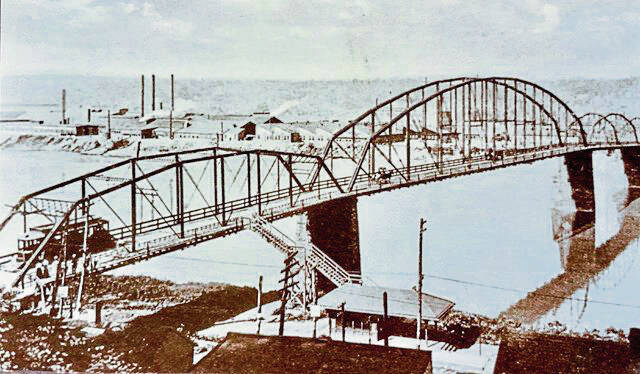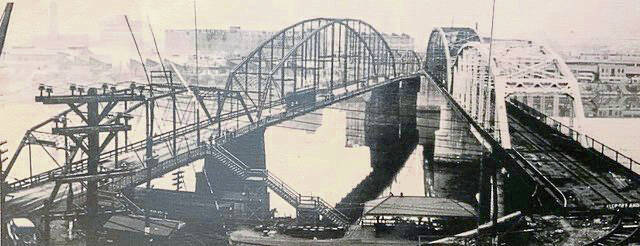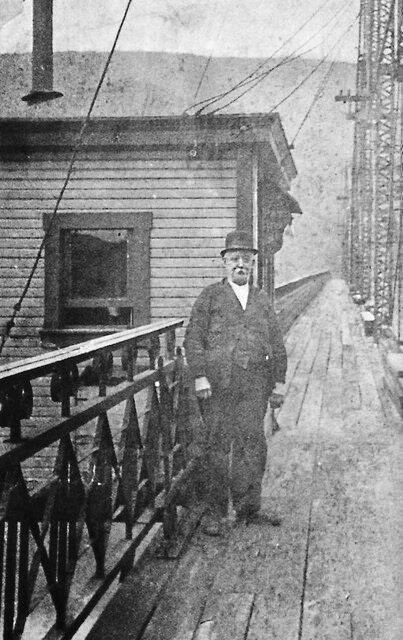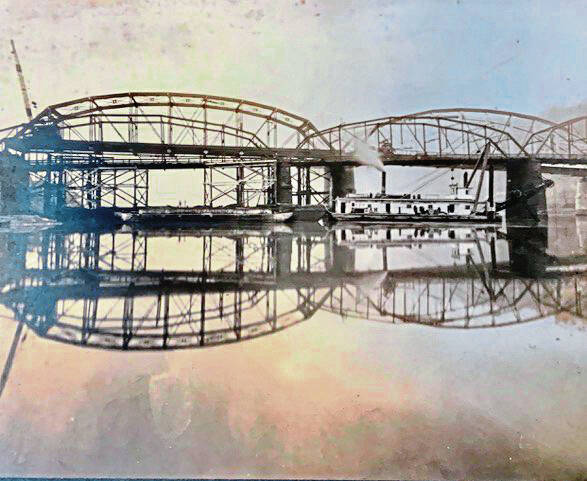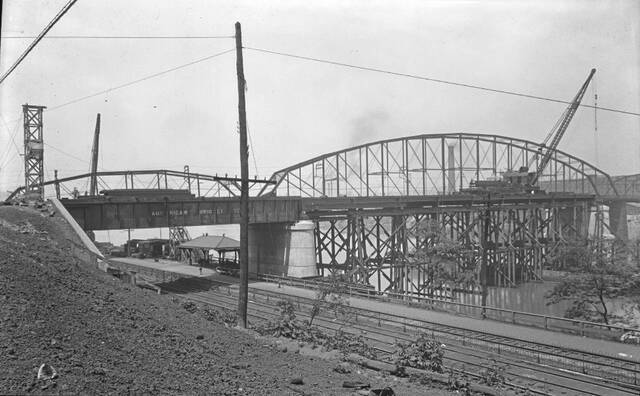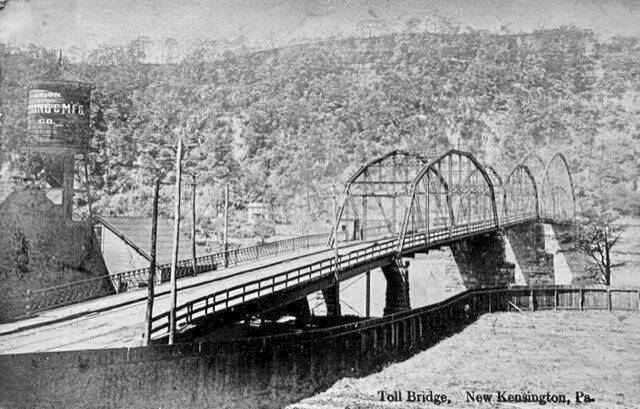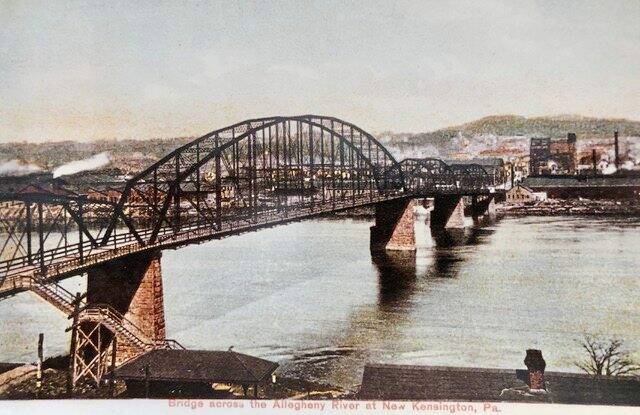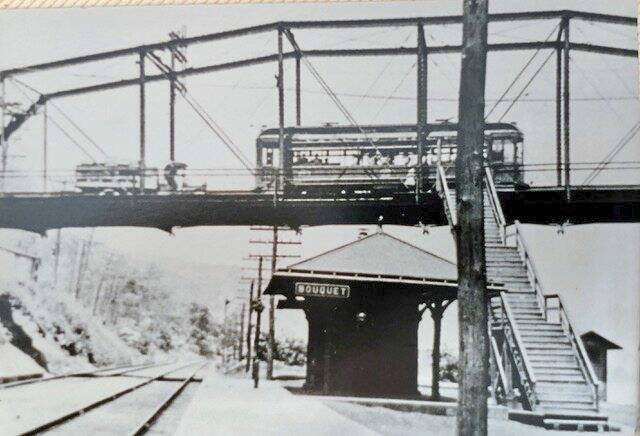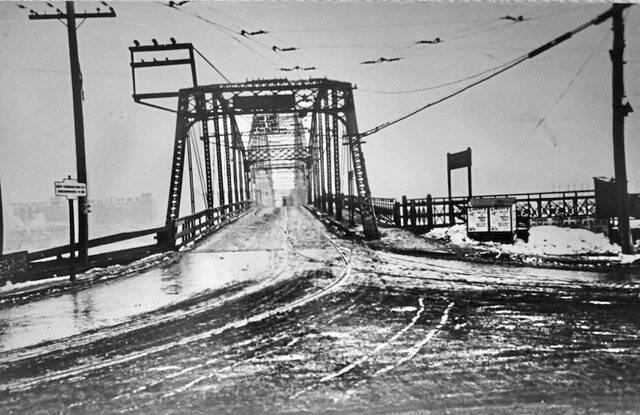Remember When: Bridges changed the way people, merchandise crossed the river in New Kensington
Until the late 1800s, river crossings were accomplished primarily using ferries throughout much of the Alle-Kiski Valley. They were used to transport not only pedestrians but also animals, carriages and wagons filled with goods going to market.
As the population increased in communities along the Allegheny River, the ferry system no longer was able to handle the volume of traffic. In 1891, a full-page advertisement appeared in the Kensington Dispatch, describing New Kensington, which was just 4 months old, as a boomtown having 12 industries and jobs for more than 4,000 workers.
A charter was secured for the construction of a bridge crossing the Allegheny River at New Kensington in 1895. This bridge, known as the Bouquet Bridge, opened in 1900.
The hill running along the river on the East Deer end of the bridge was known as Bouquet Hill and is likely how the bridge derived its name. It was constructed with a wooden deck and sidewalk. Initially, the bridge was a toll bridge with a toll booth located adjacent to the sidewalk on the New Kensington side.
The toll for pedestrians was 2 cents, and a horse and buggy were charged a nickel. After 1902, the bridge also carried a streetcar line which ran between New Kensington and Natrona. The collection of tolls on the bridge was discontinued June 1, 1916.
There was a railroad station below the bridge on the West Deer end. It was named Bouquet Station and was constructed initially as a rest stop because the time between restroom facilities along the rail line was found to be excessive for many passengers. A large staircase connected the bridge to the train station below.
As the bridge deteriorated, a replacement bridge was built adjacent to it in 1926. For a period of time, there were two bridges side by side at the present location.
The new bridge later became locally known as the Ninth Street Bridge. It was constructed by the American Bridge Co. of New York and cost $750,000.
At the opening ceremonies Nov. 16, 1927, Allegheny County Commissioner E.V. Babcock described the bridge as a “band of steel binding the friendship of Allegheny and Westmoreland counties.” It was estimated that more than 25,000 people visited the site to see the new bridge in the four days before its opening.
Hundreds of flags and banners decorated the Ninth Street approach to the bridge. Businesses in New Kensington closed from 2:30 to 4 p.m. so employees could attend the opening ceremonies. A parade led by local firemen’s bands formed at the Howard Hotel near the present location of Peoples Library and proceeded toward the bridge.
Irene Conner, daughter of Mr. and Mrs. E. Conner of Victoria Avenue in New Kensington, cut the ribbon opening the bridge to the public. In the evening, there was a banquet held in the Aluminum Company of America dining room with 400 people in attendance.
The Ninth Street Bridge, also known as the New Kensington Bridge, was renamed in 1984 after Chester L. Schmitt of New Kensington, a businessman who served in the Pennsylvania Legislature for 16 years.
He was best known for working to establish the state Consumer Credit Act of 1966, which later was used as a model for the Federal Truth in Lending Law.
Ray Rieser is a freelance writer.
Remove the ads from your TribLIVE reading experience but still support the journalists who create the content with TribLIVE Ad-Free.

